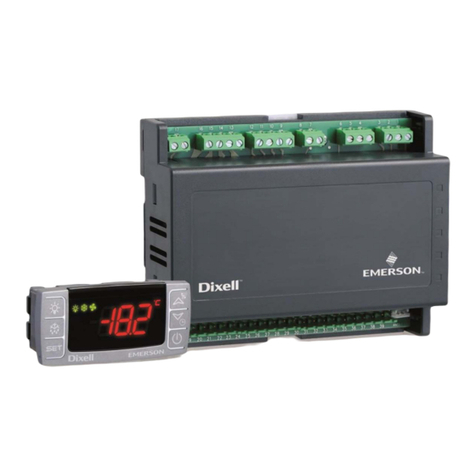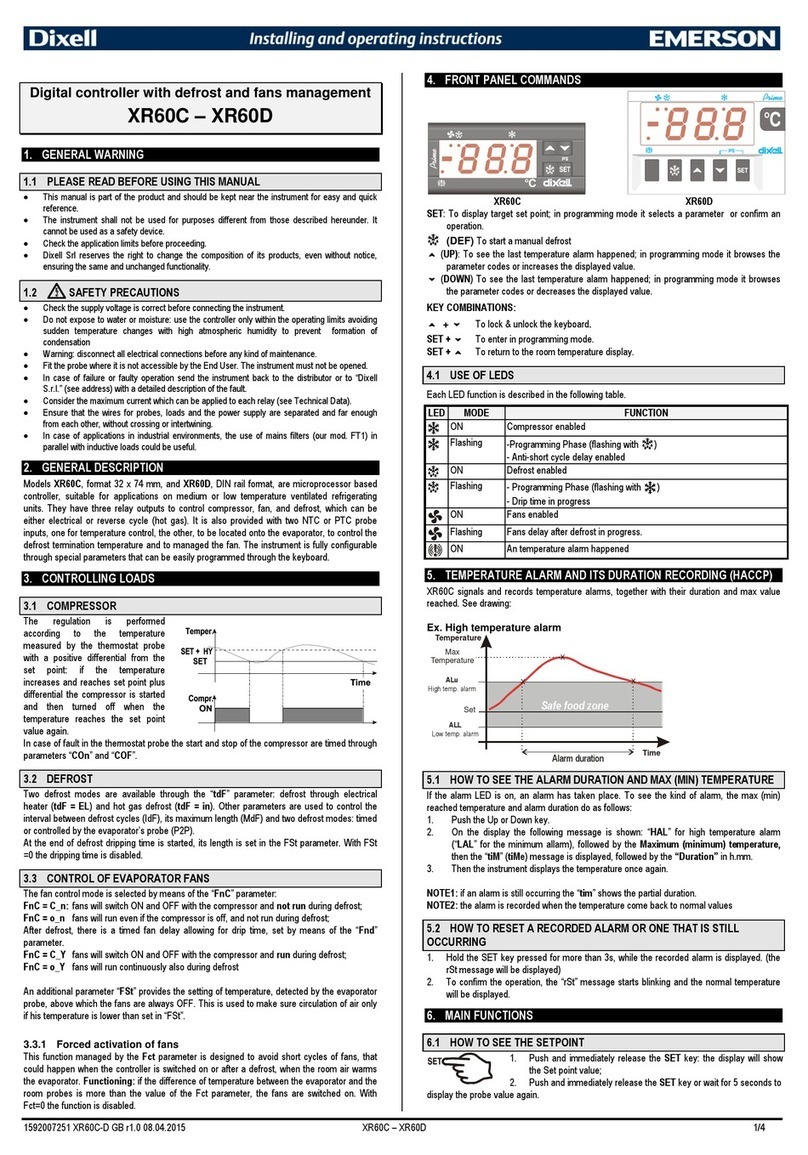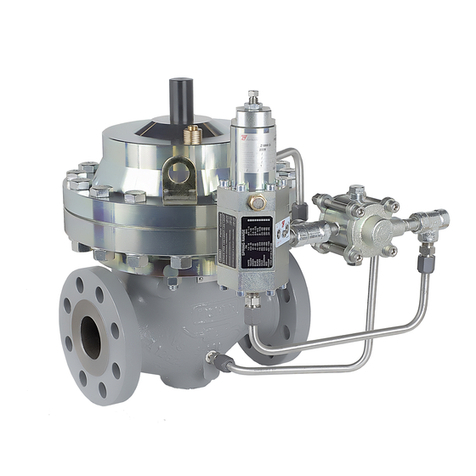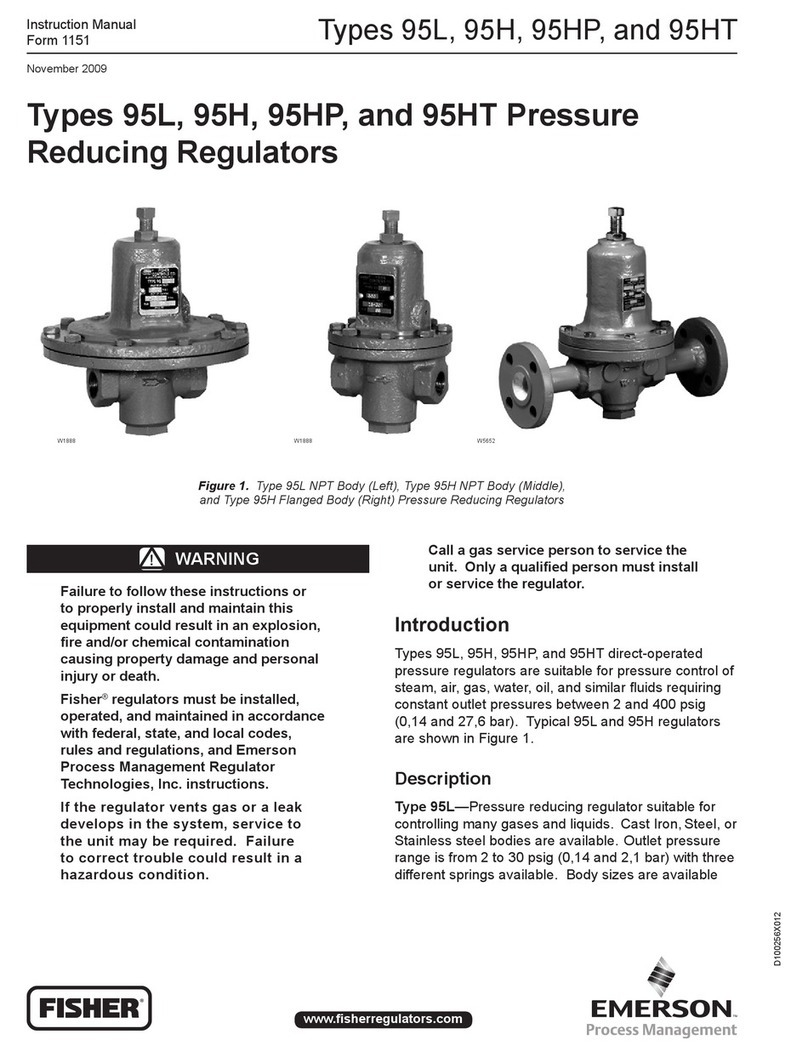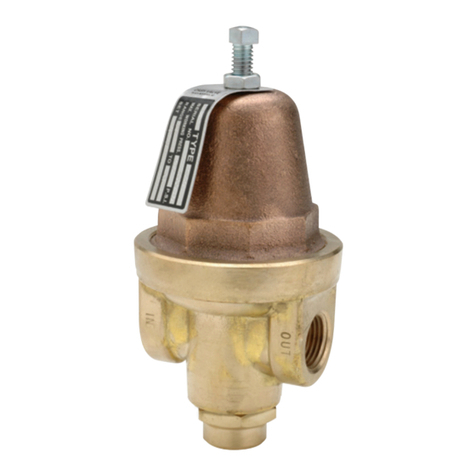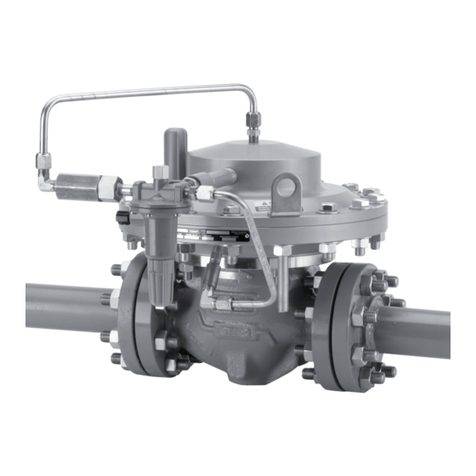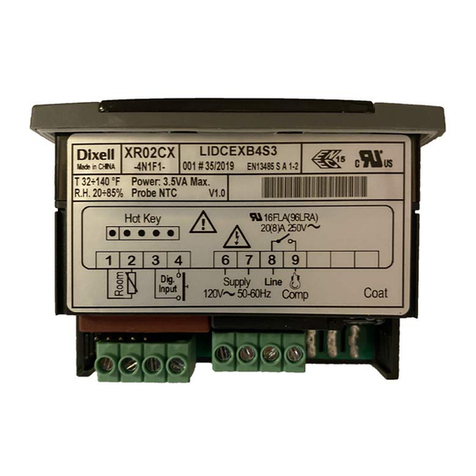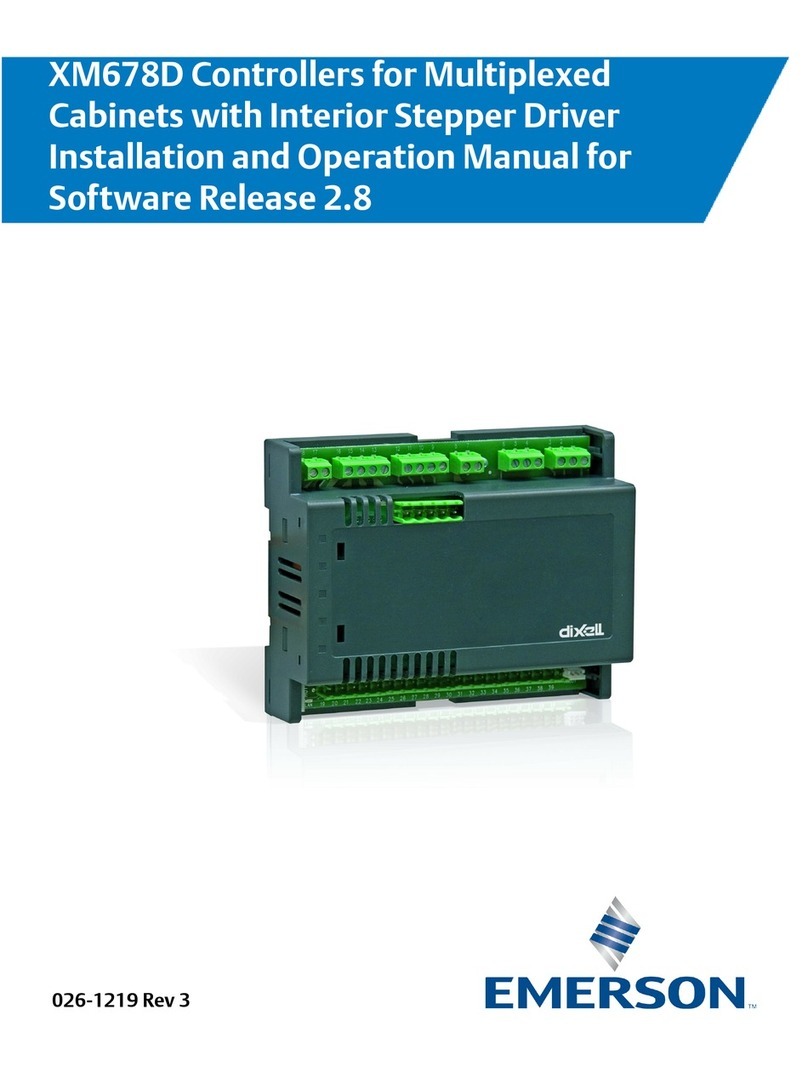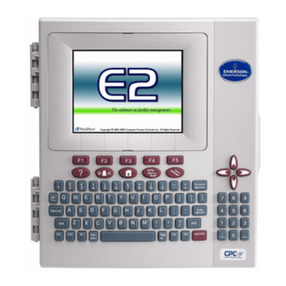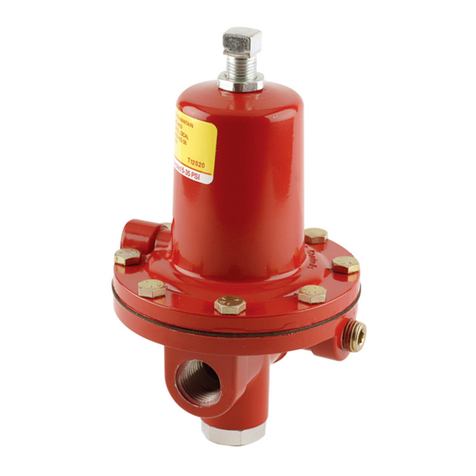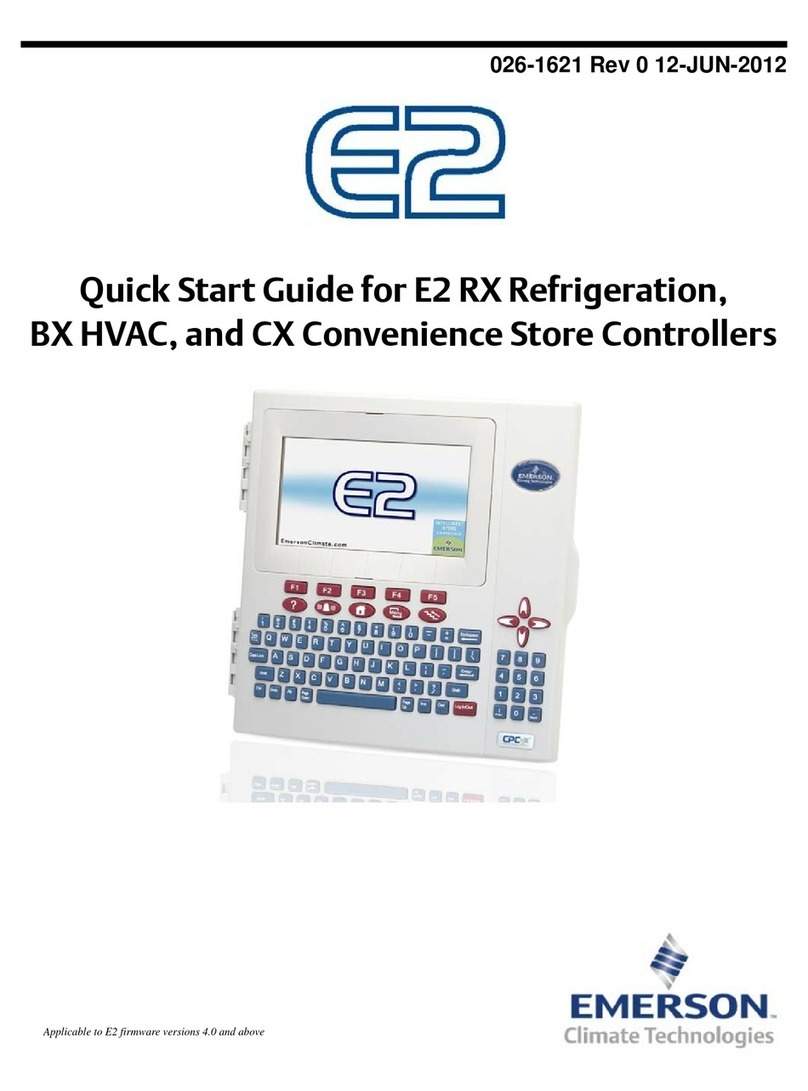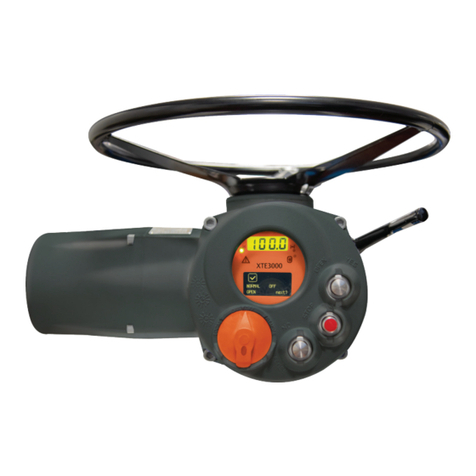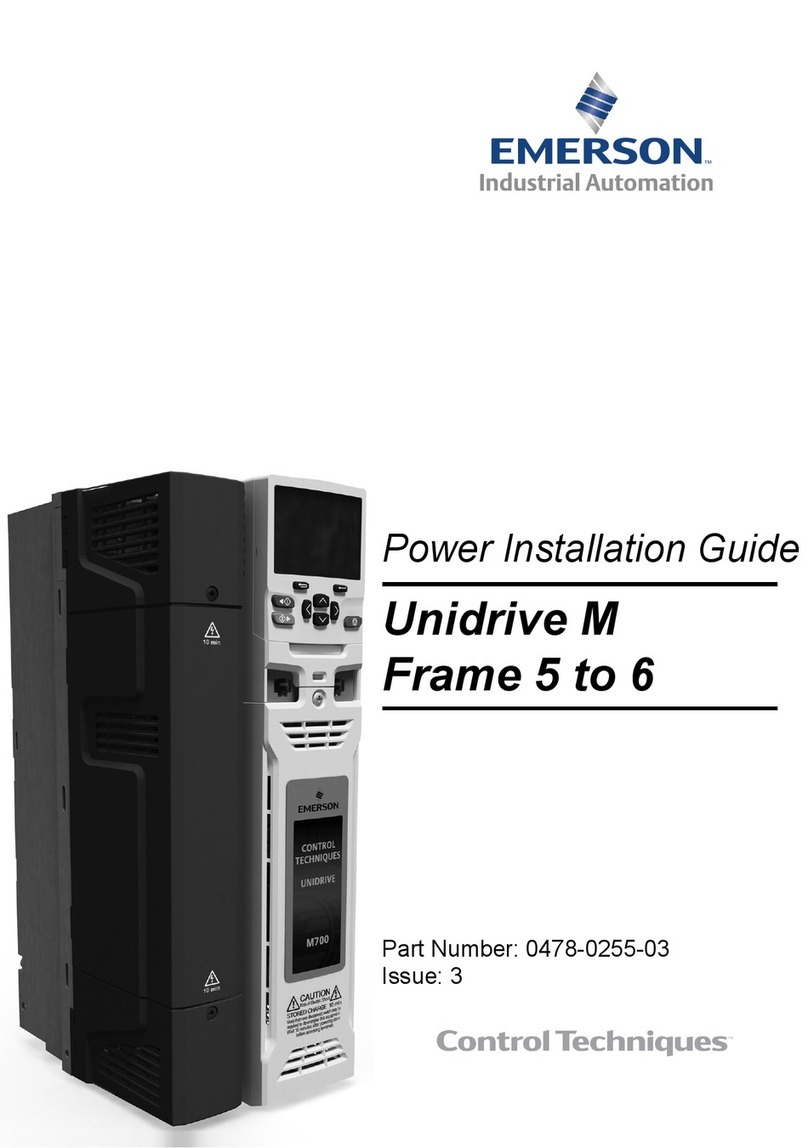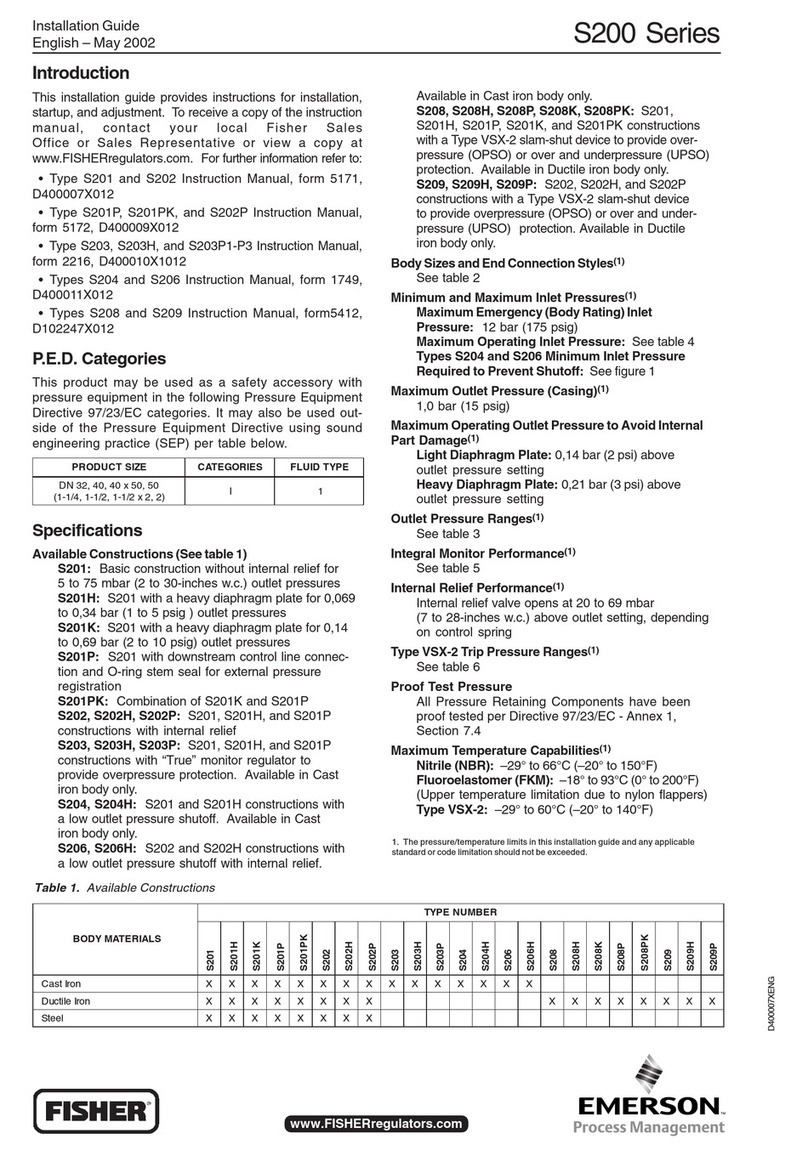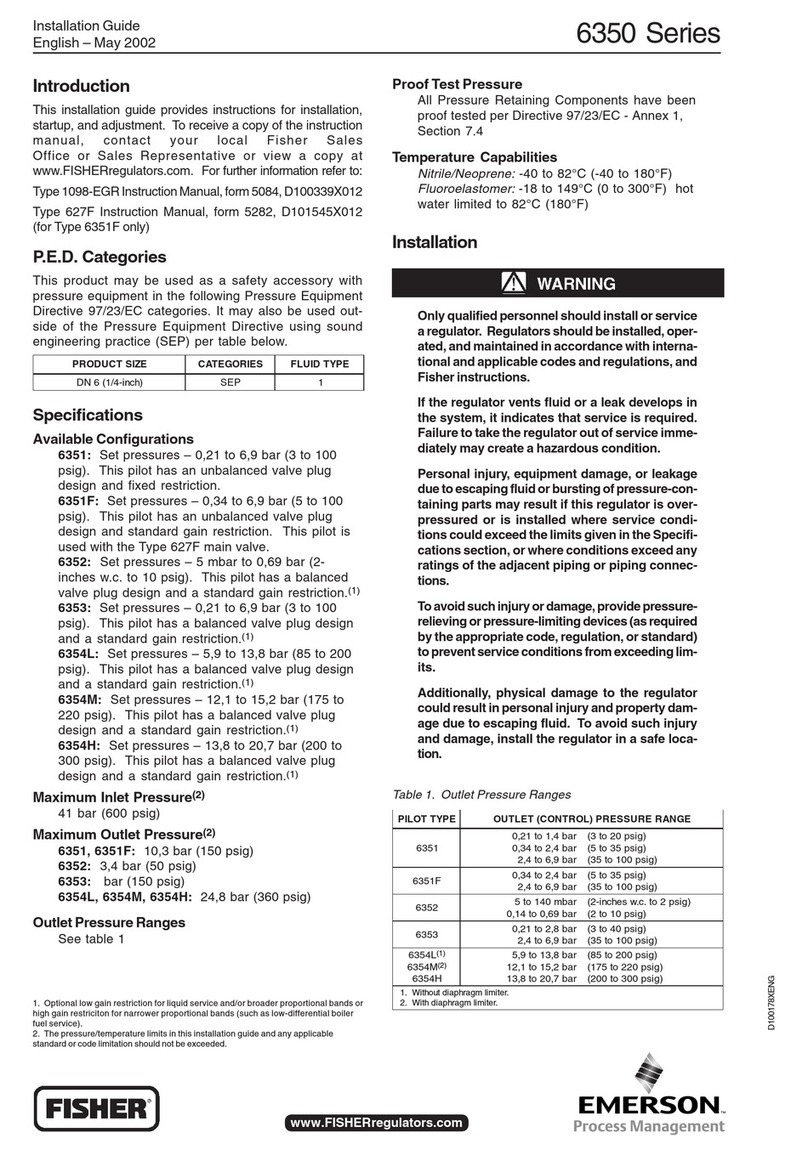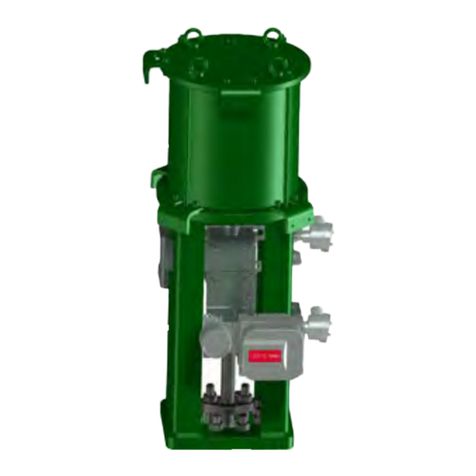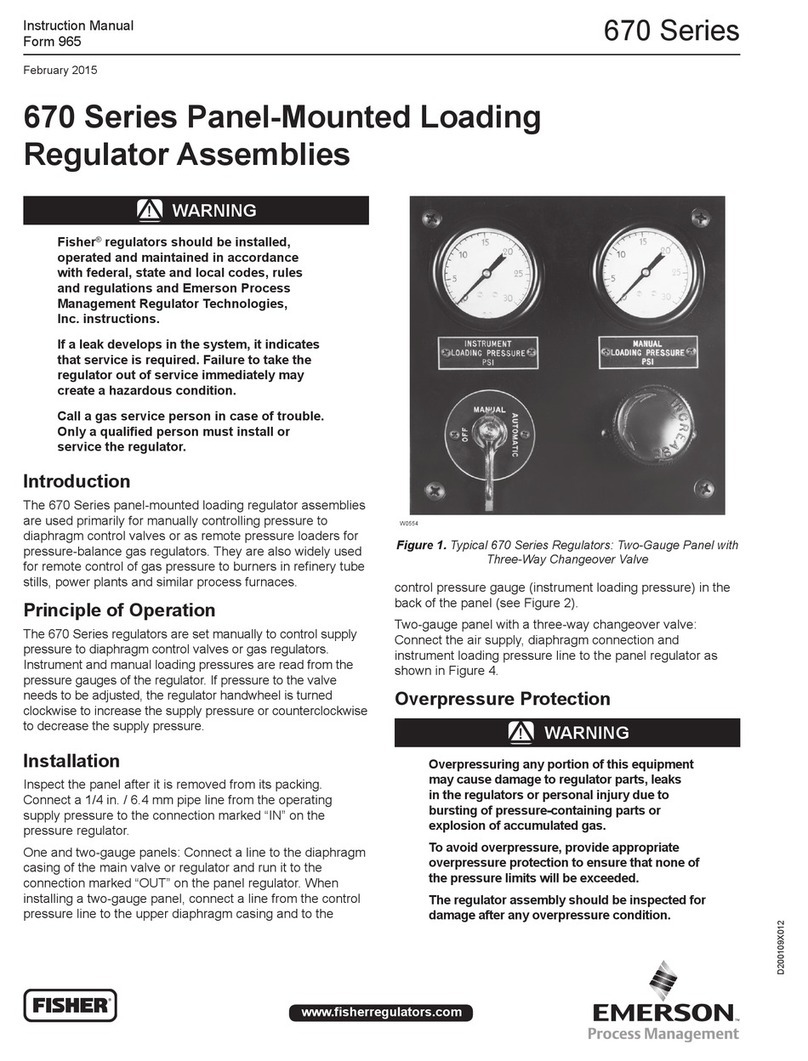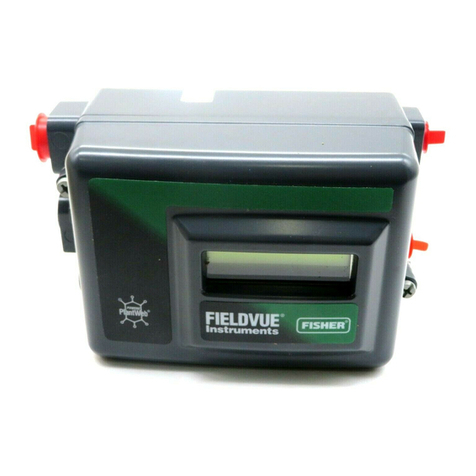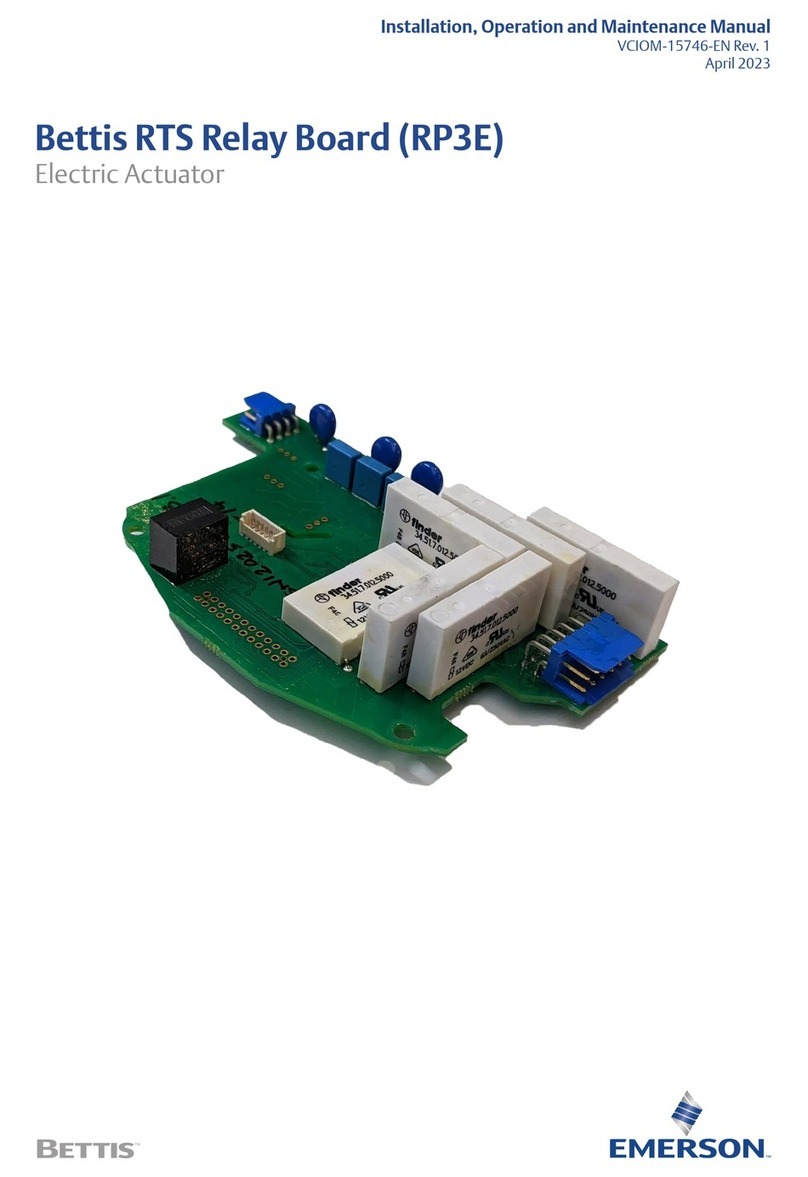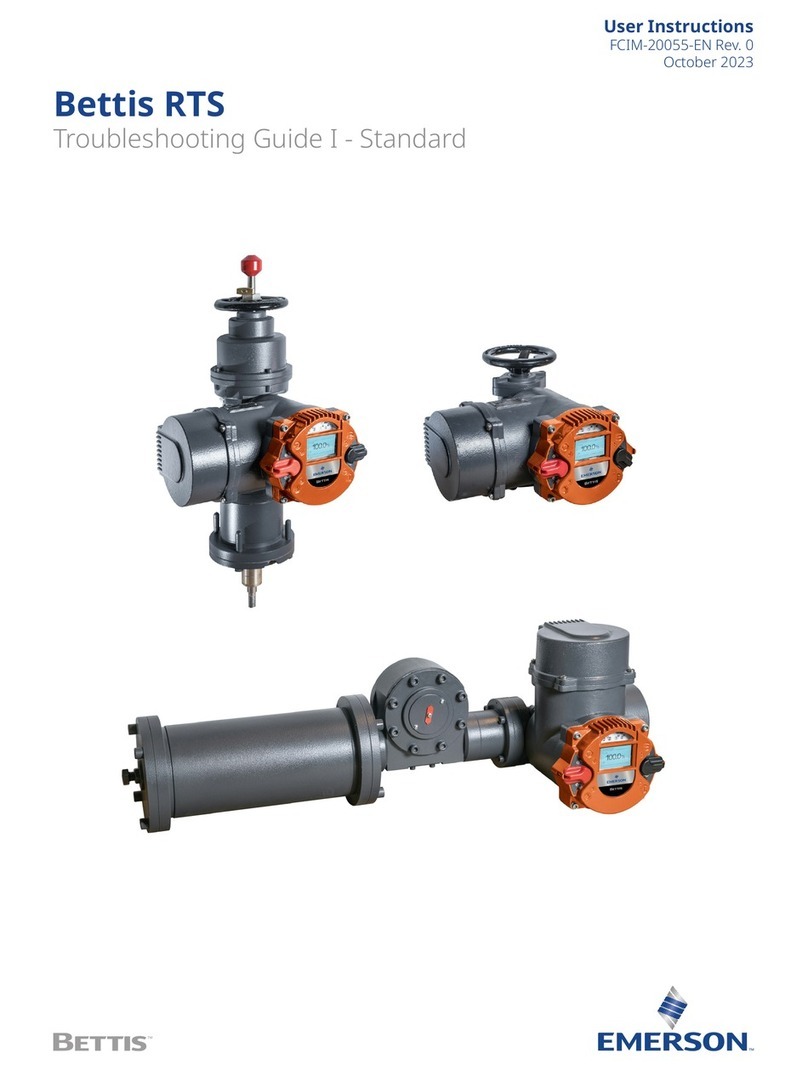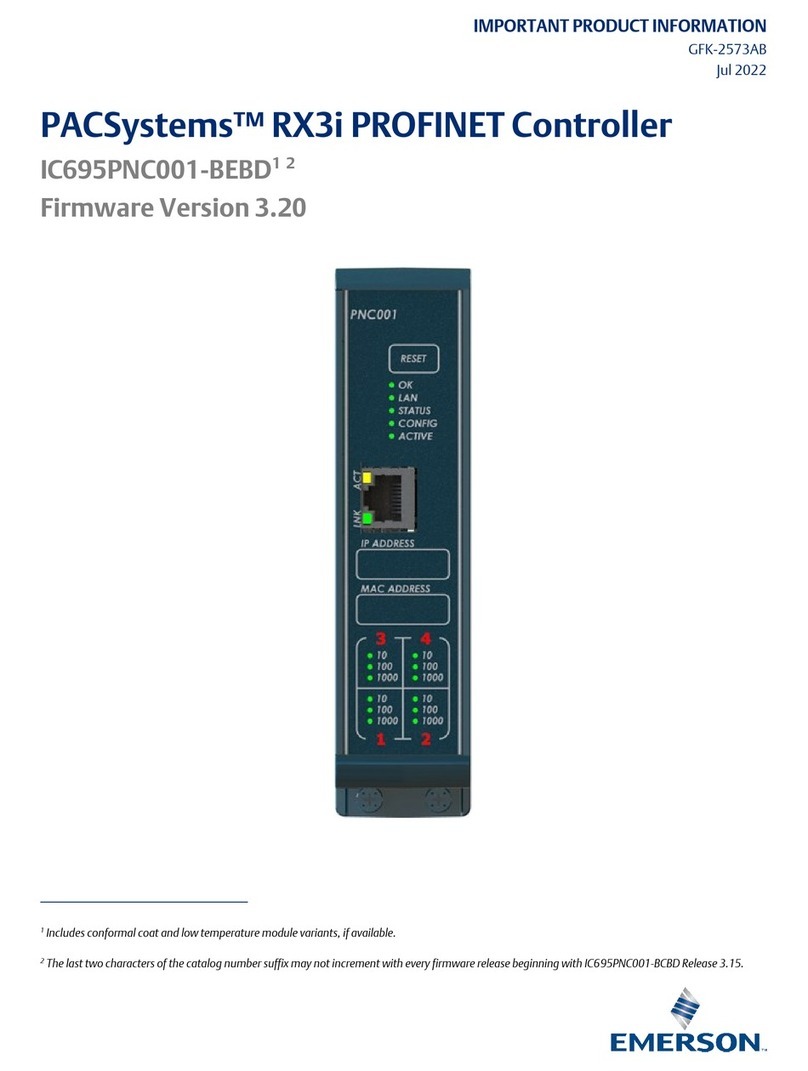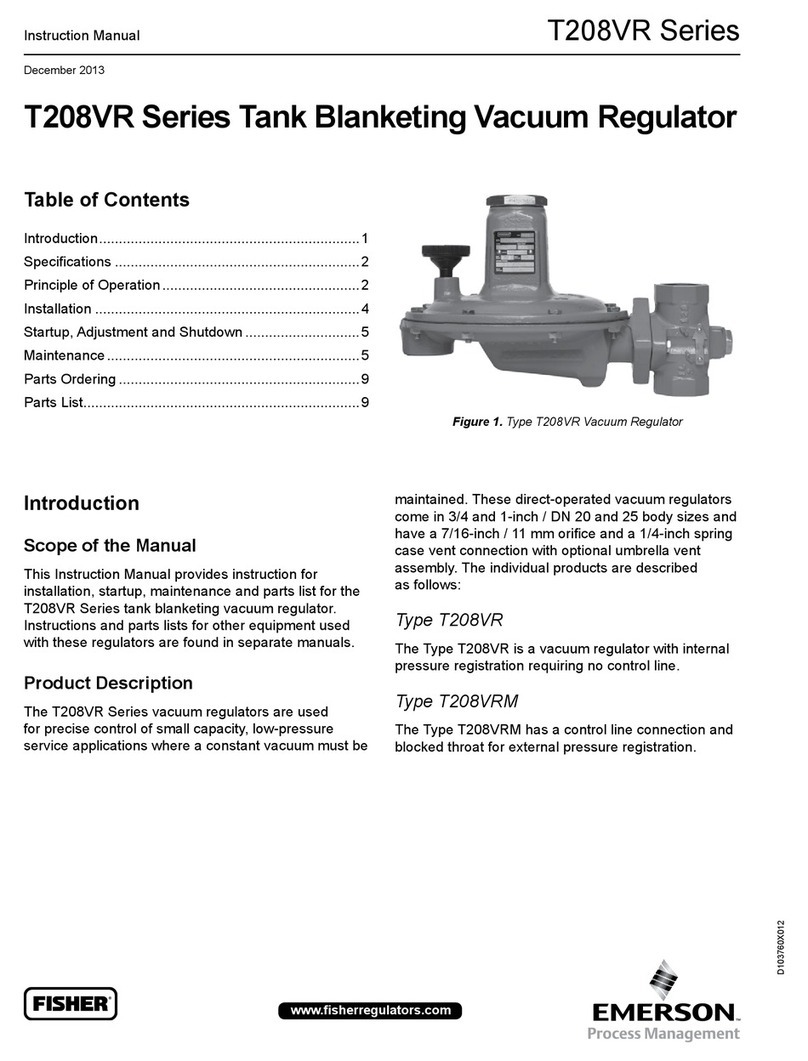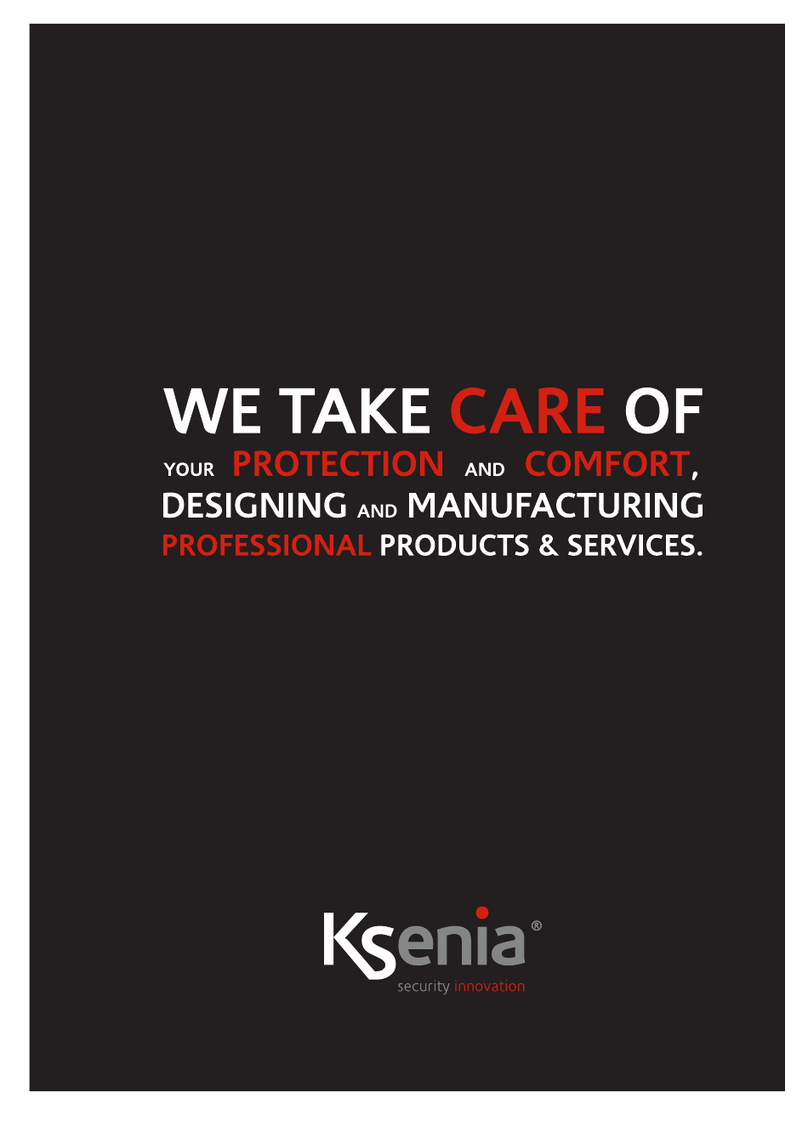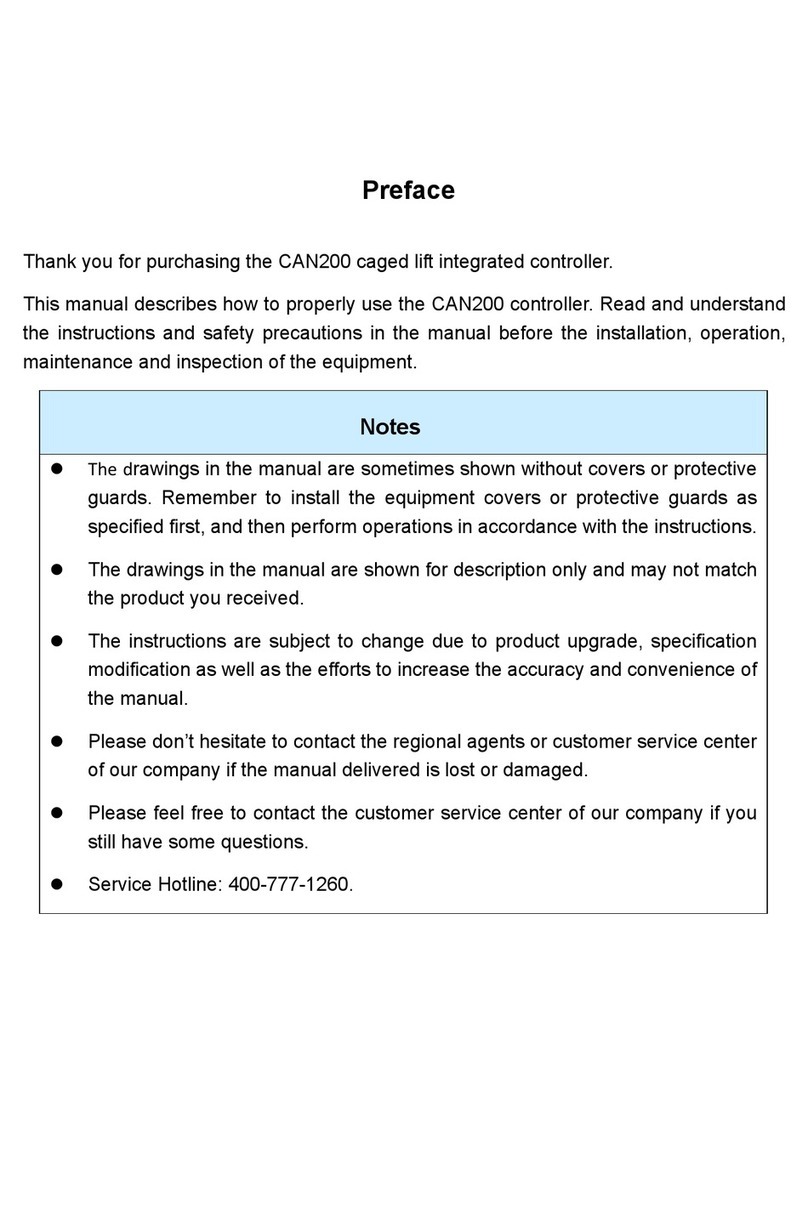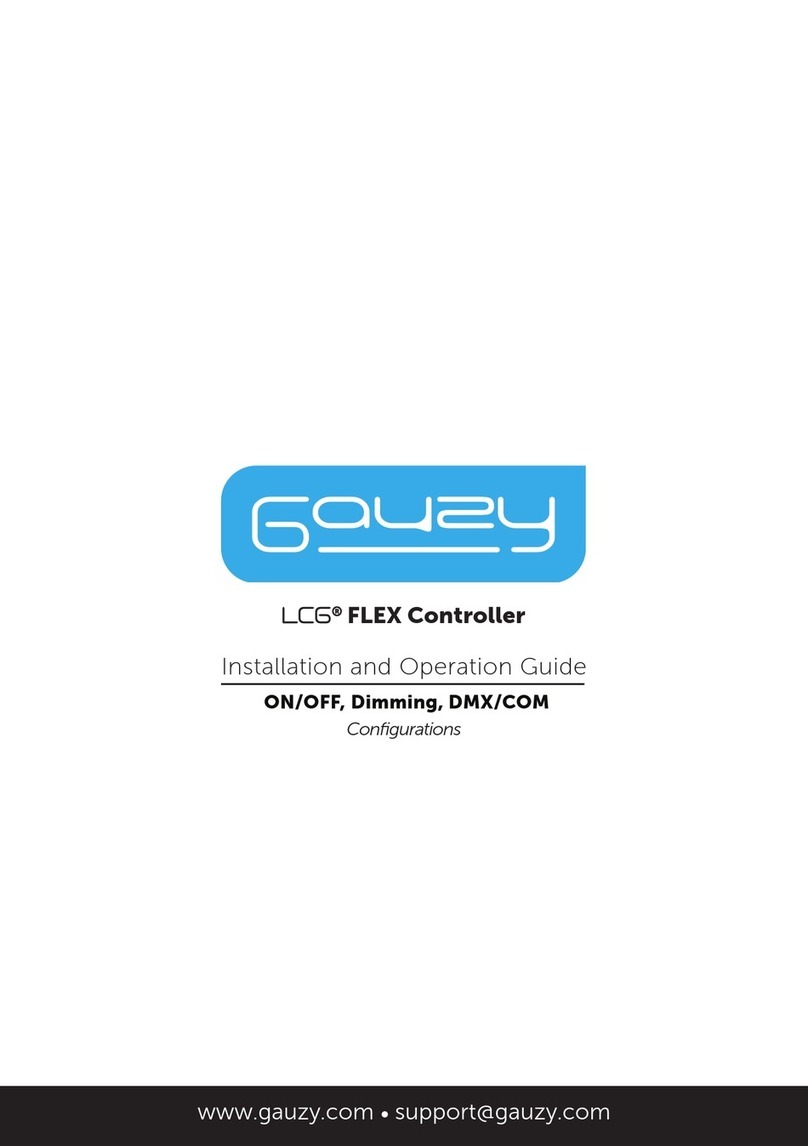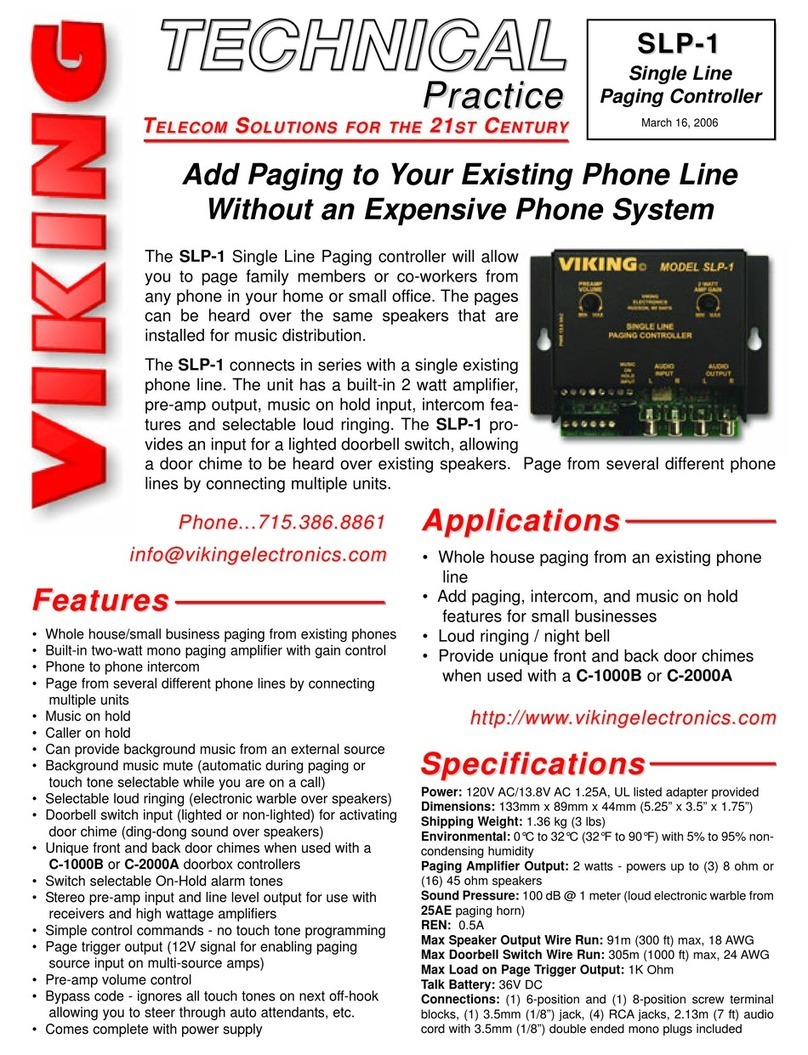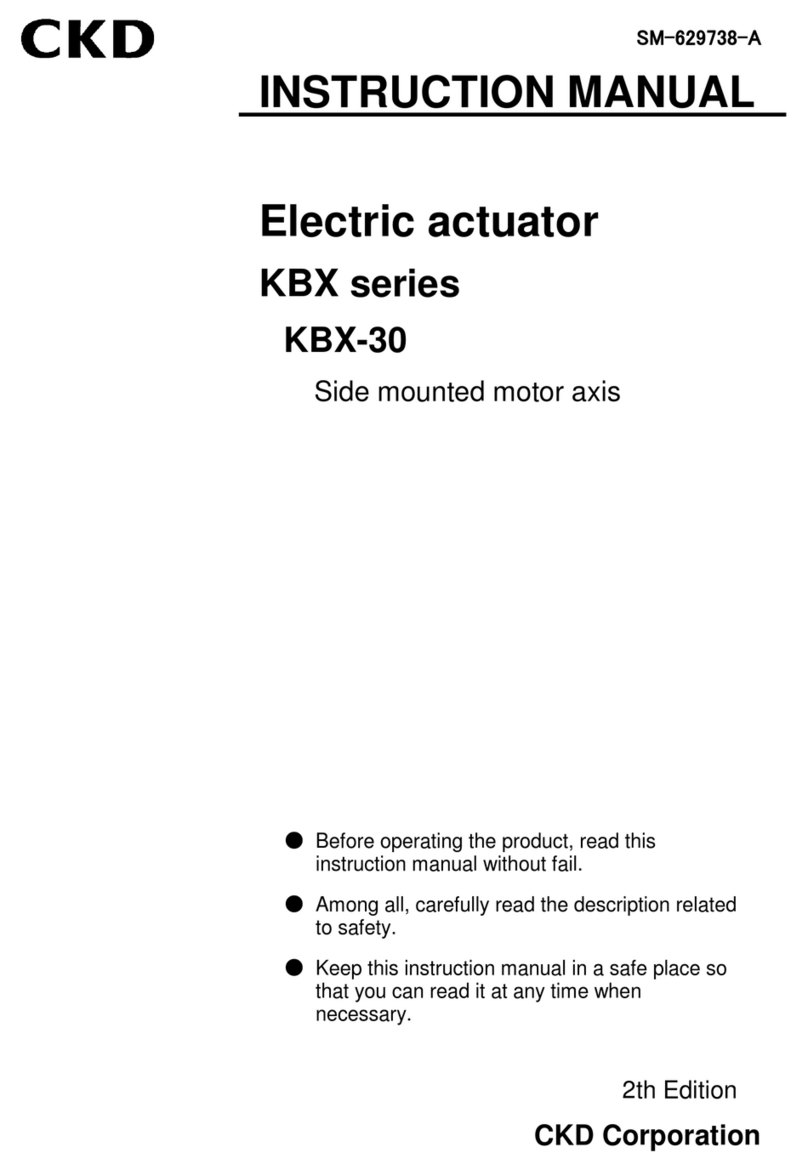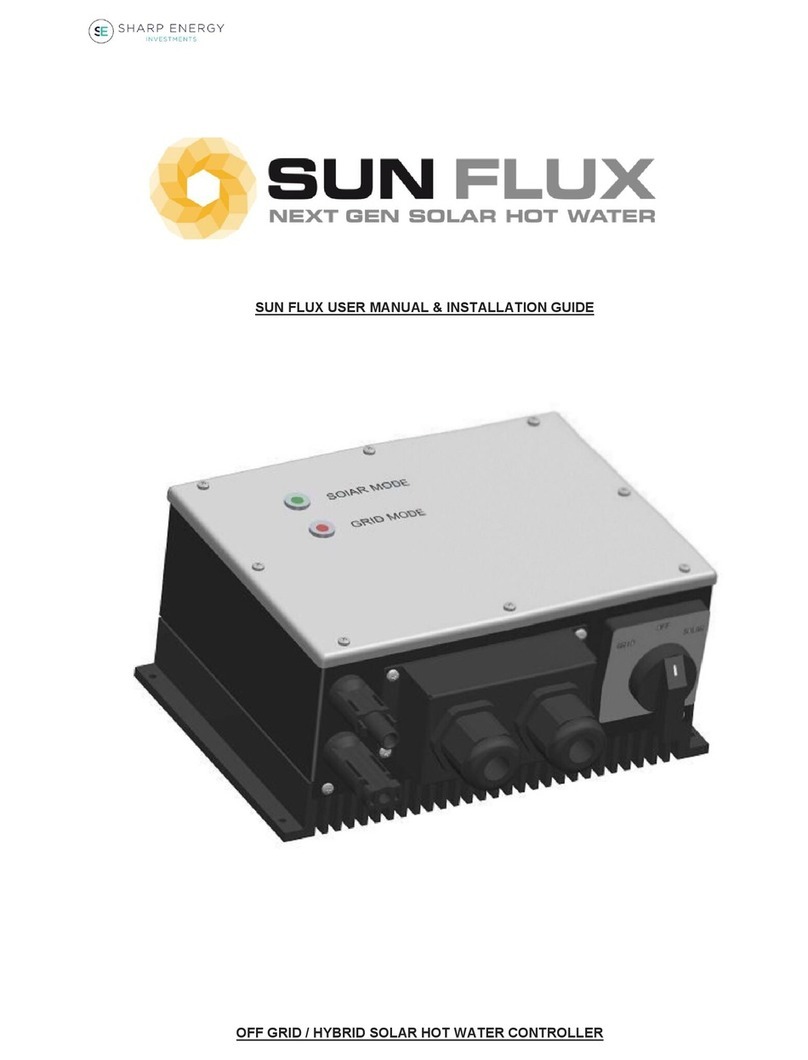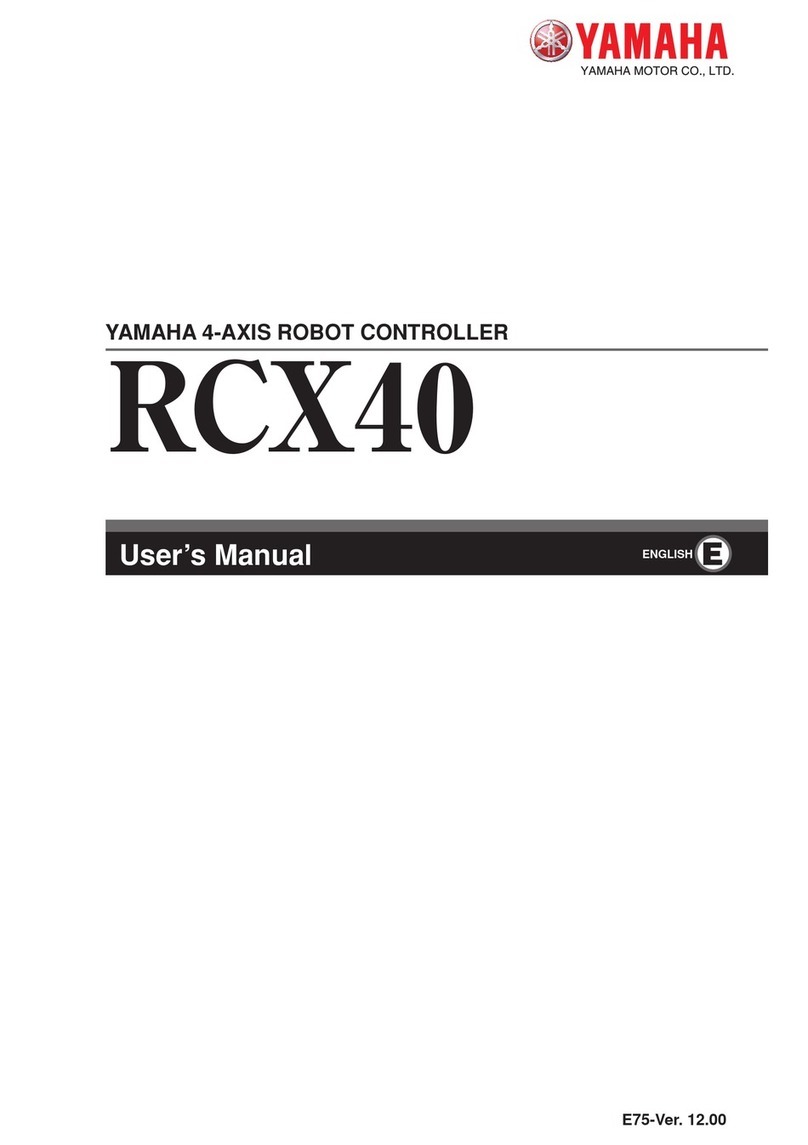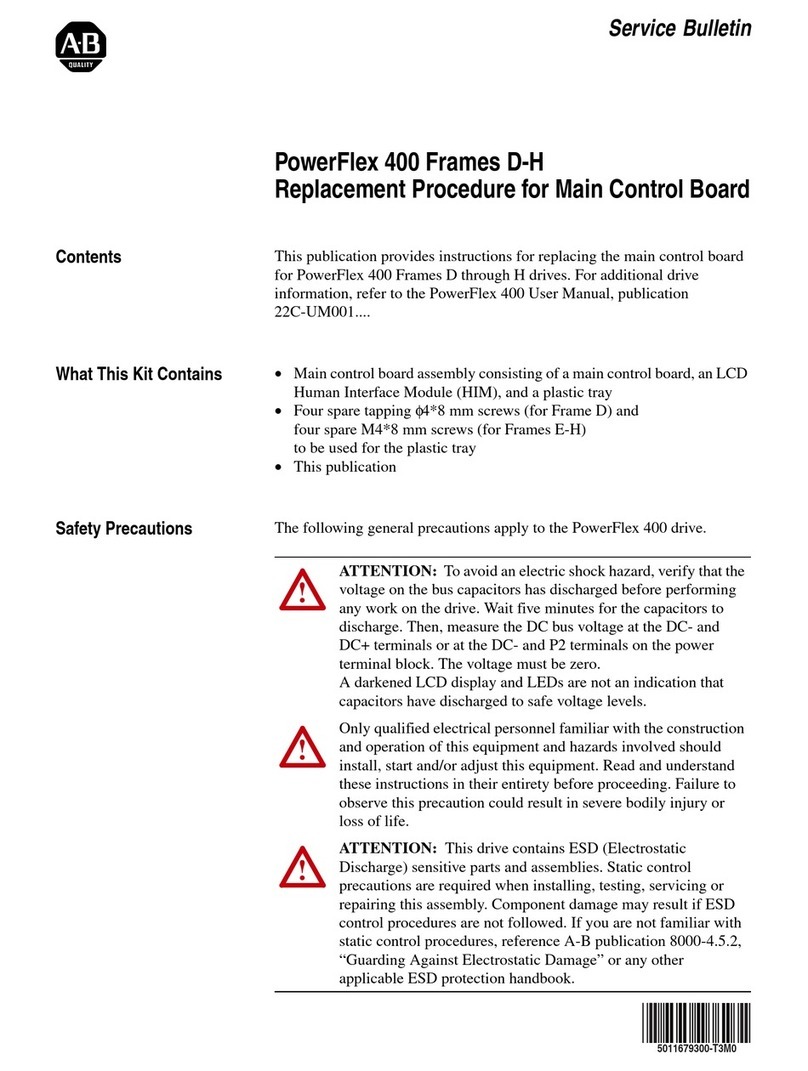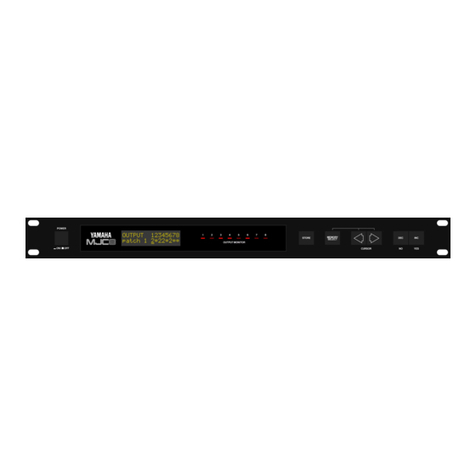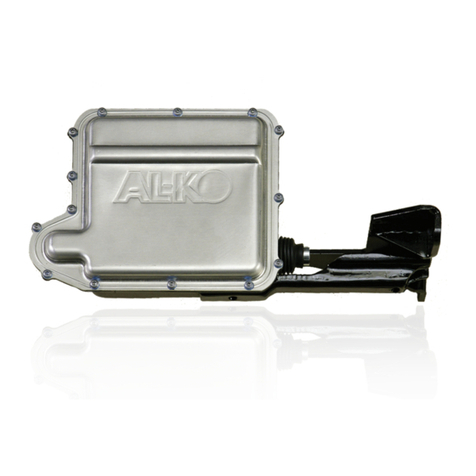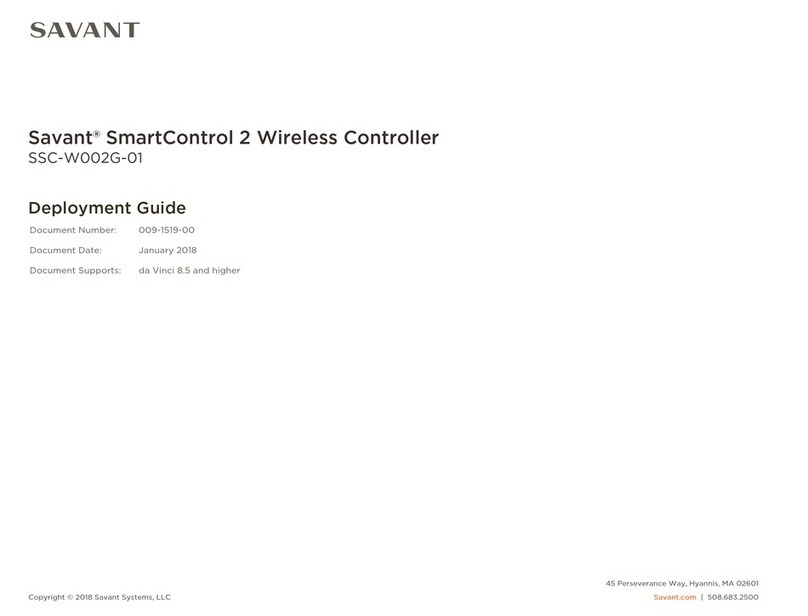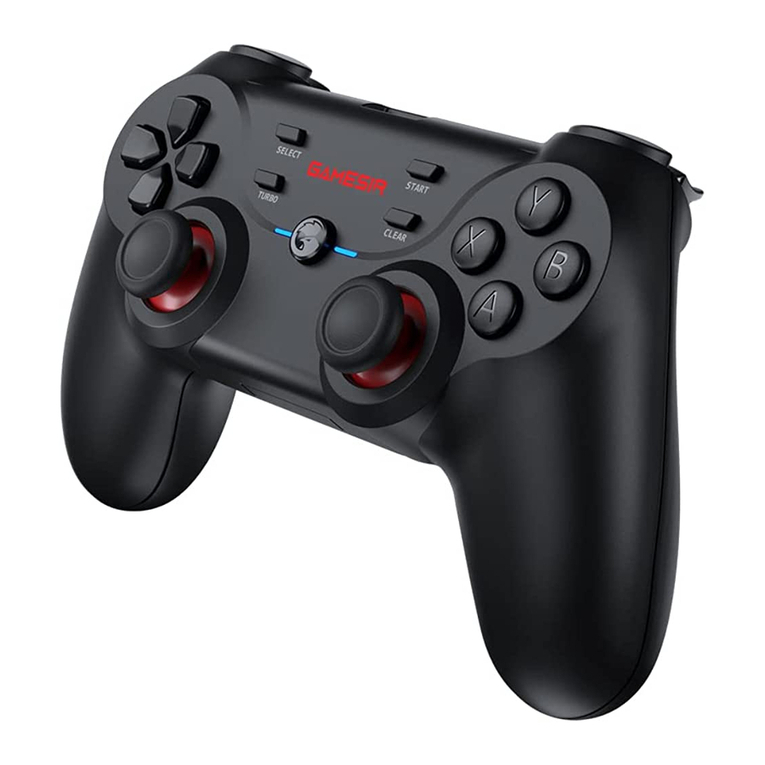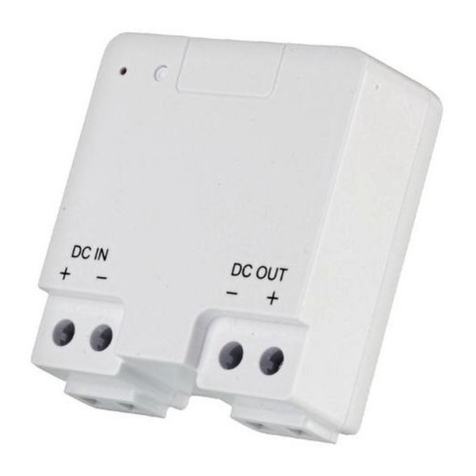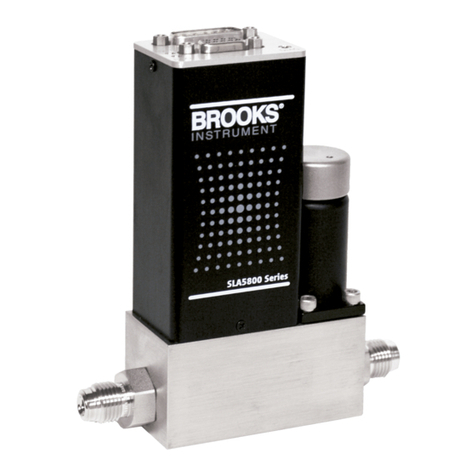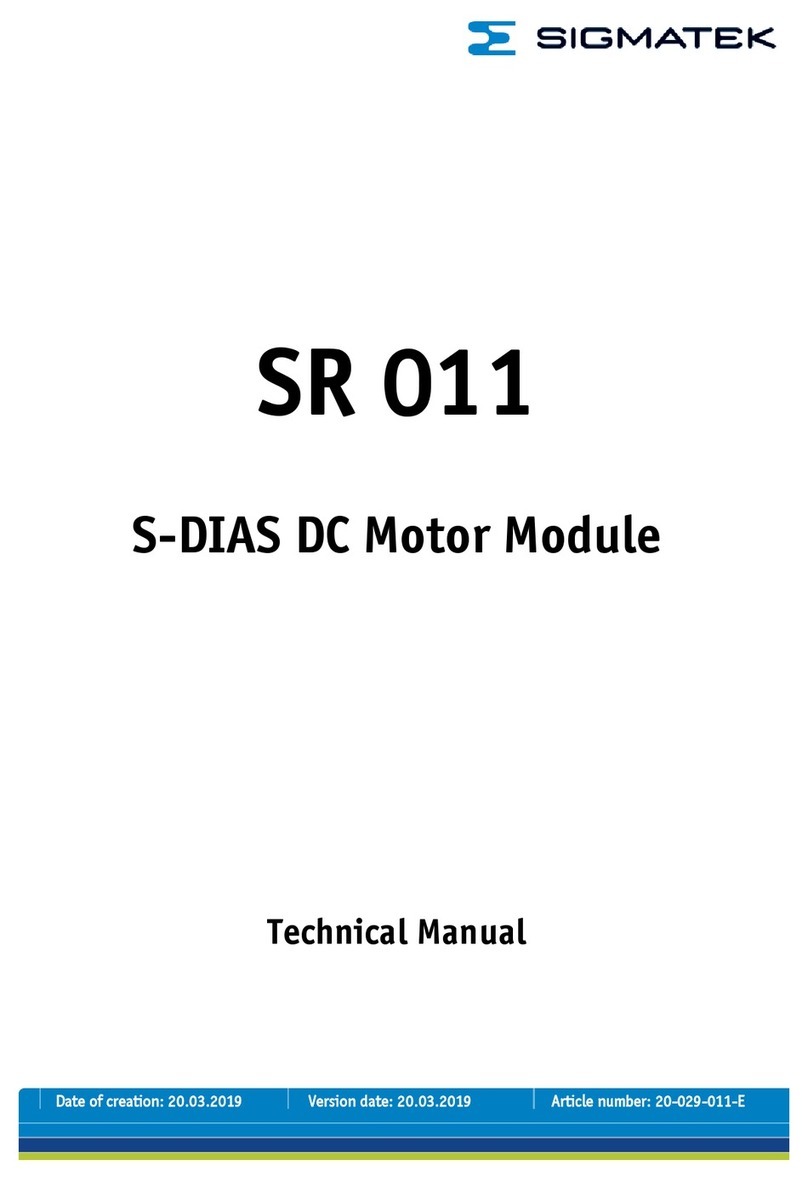
Types 749B and R130
4
handwheel into the old reserve side regulator until
it cannot be turned any further. This side is now
the new “Supply” side. Screw the cap and the
chain assembly into the old supply side until it cannot
be turned any further. This side is now the new
“Reserve” side.
When the “Supply” handwheel is installed in the new
side, the red ag in the indicator should disappear or
the pointer in the gauge should move out of the red.
CAUTION
There will still be pressure in the empty
container equal to the “Reserve” side
manifold setting.
If the containers are cylinders, close the cylinder valve
of the empty cylinder to prevent air from entering
the cylinder and disconnect the cylinder. Clean the
new cylinder’s valve outlet. After the new cylinder
is in place, slowly open the cylinder valve. The new
cylinder now becomes the reserve cylinder. If only one
cylinder, the new supply cylinder, is left connected, the
open line (pigtail or hose) must be capped to prevent
leakage or contamination.
Installation
!
WARNING
Personal injury or system damage may
result if these regulators are installed
without appropriate overpressure
protection. Maximum emergency outlet
pressure for the Type 67C regulators
used on the Type R130 is 50 psig /
3.4 bar over the outlet pressure setting,
or 100 psig / 6.9 bar, whichever is greater.
Maximum emergency outlet pressure for
the 64 regulators used on the
Type 749B is 220 psig / 15.2 bar.
Maximum emergency outlet pressure
for the Type HSRL nal stage regulator
is 3 psig / 0.21 bar above setpoint.
Outlet pressures greater than these
above set point may cause damage to
regulator parts, leaks in the regulator,
or personal injury due to bursting of
pressure-containing parts or explosion of
accumulated gas.
If the regulator is exposed to an
overpressure condition, it must be
inspected for any damage that may
have occurred.
Large volumes of gas may discharge
through the regulator vent during
internal relief valve operation which
can result in re or explosion from
accumulated gas.
All vents should be kept open to permit
the free ow of air into and out of the
regulator. Protect openings against the
entrance of rain, snow, ice formation,
paint, mud, insects, or any other foreign
material that could plug the vent.
LP-Gas may discharge to the
atmosphere through the vent. An
obstructed vent which limits air or
gas ow can cause abnormally high
pressure that could result in personal or
property damage.
Make sure gas ow through the regulator is in the
correct direction. There are two 1/4-inch NPT
(Type R130) or two 1/2-inch NPT (Type 749B) inlet
connections and the “Outlet” connection is clearly
marked on the regulator. The installation should
be adequately protected from vehicular trafc and
damage from other external sources.
Install the regulator high enough above ground level
- at least 18 inches / 457 mm - so that rain splatter
cannot freeze in the vents. Whether a protective hood
is used or not, do not install the regulator in a location
where there can be excessive water accumulation or
ice formation, such as directly beneath a downspout,
gutter, or roof line of a building.
A regulator installed outdoors without a protective
hood must have its vent pointed vertically down, see
Figure 2, to allow condensate to drain. This minimizes
the possibility of freezing and of water or other foreign
material entering the vent and interfering with proper
operation. Some installations, such as in areas with
heavy snow fall, require a hood or enclosure to protect
the regulator. Before installing the regulator, check for
damage which might have occurred in shipment. Also
check for and remove any dirt or foreign matter which
may have accumulated in the regulator body or the
pipeline. The outlets of the container valves should be
cleaned to remove dirt or water. One method of doing
